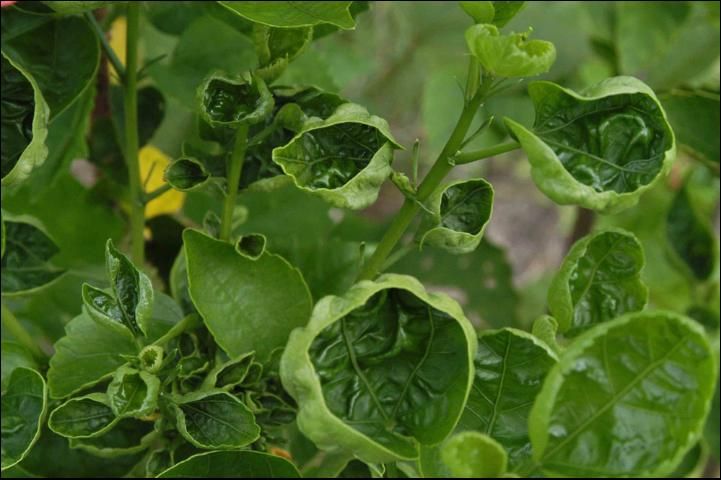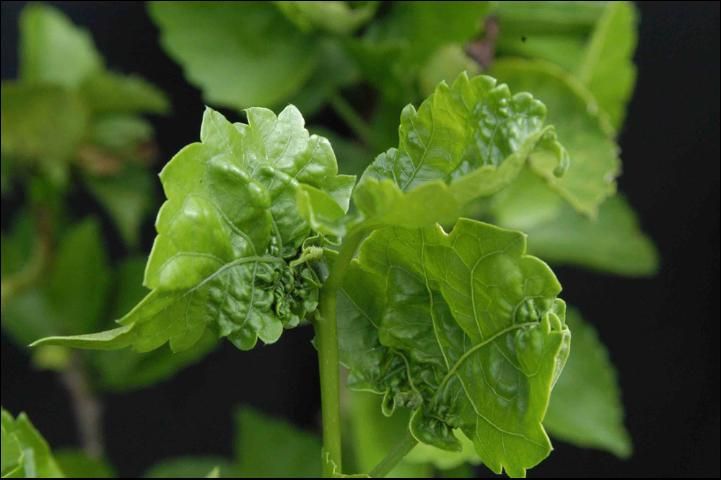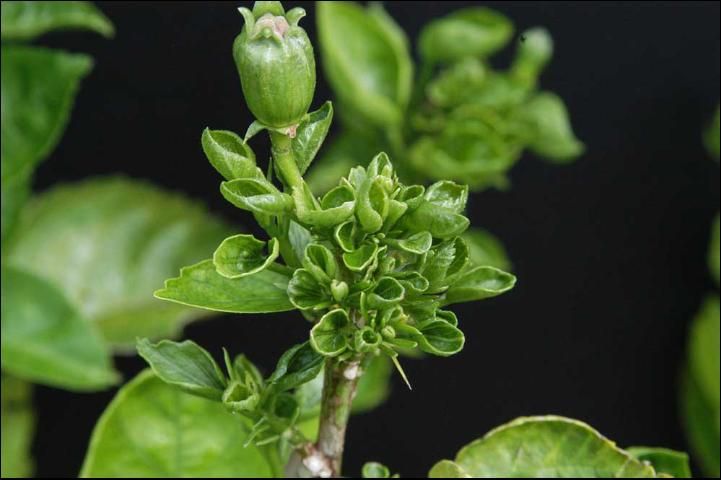Ornamental trees and shrubs are grown primarily for functional and aesthetic purposes. Nutritional deficiencies can affect a plant's ability to perform its function in the landscape and certainly can reduce its aesthetic value. Although about 16 elements are required for normal plant growth, only a few of these elements are commonly deficient in Florida landscape plants. The purpose of this document is to describe and illustrate typical symptoms for common nutrient deficiencies in trees and shrubs grown in south Florida landscapes.
Nitrogen (N)
Nitrogen is the predominant element applied in most landscape fertilizers, yet N deficiency is actually quite rare in landscape trees and shrubs. Symptoms appear first, and are most severe, on the oldest leaves as a uniform light green or yellow coloration (Figure 1). As the deficiency progresses, the entire plant quickly becomes light green in color and growth rate declines sharply (Figure 2).
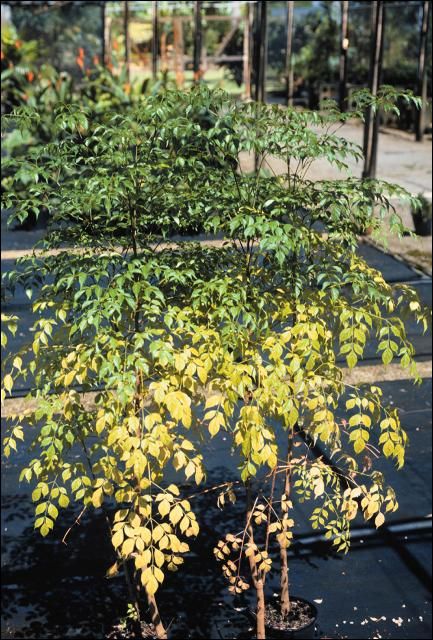

Phosphorus (P)
Phosphorus deficiency is quite rare in Florida landscape plants. However, It is fairly common in firebush (Hamelia patens) and very common in combination with potassium (K) deficiency in Ixora sp. Phosphorus deficiency appears as a uniform wine-red coloration on the oldest leaves of plants whose leaves naturally contain anthocyanin pigments (Figure 3). In other species, however, older leaves will be light yellow-green in color. Phosphorus-deficient plants are typically severely stunted compared to normal plants. In ixora, P deficiency, in combination with K deficiency, results in diffuse reddish spotting on the oldest leaves (Figure 4).

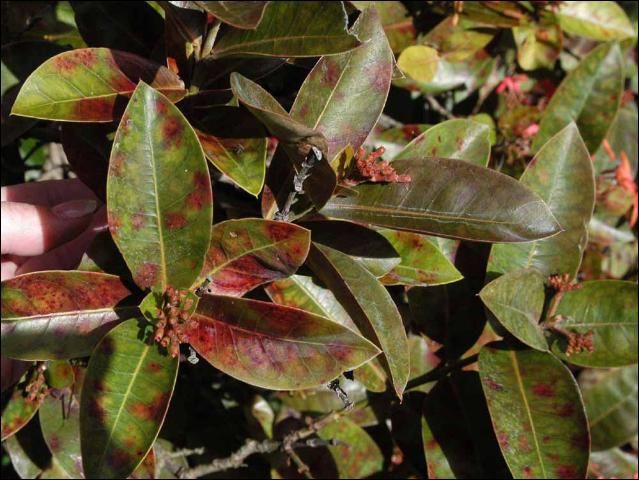
Potassium (K)
Potassium deficiency is occasionally seen on trees and shrubs, especially in south Florida. Symptoms occur on the oldest leaves as necrotic spotting, interveinal chlorosis and necrosis, or marginal necrosis, depending on the species and severity (Figures 5–7). It is very common on orchid trees (Bauhinia sp.), especially in the months just prior to leaf drop (Figure 8).
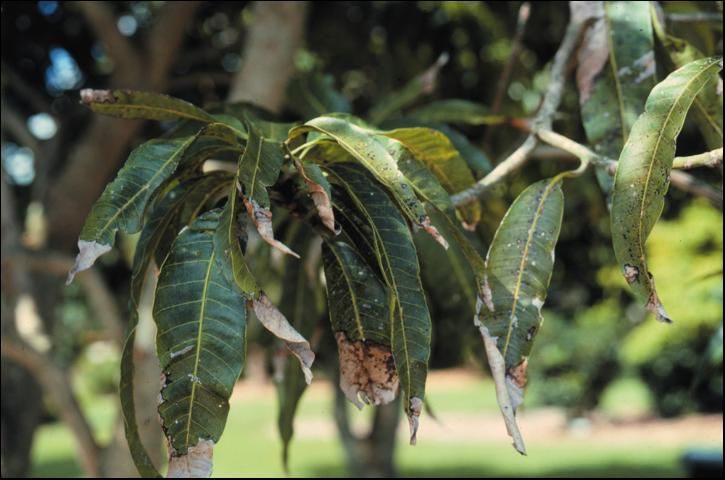
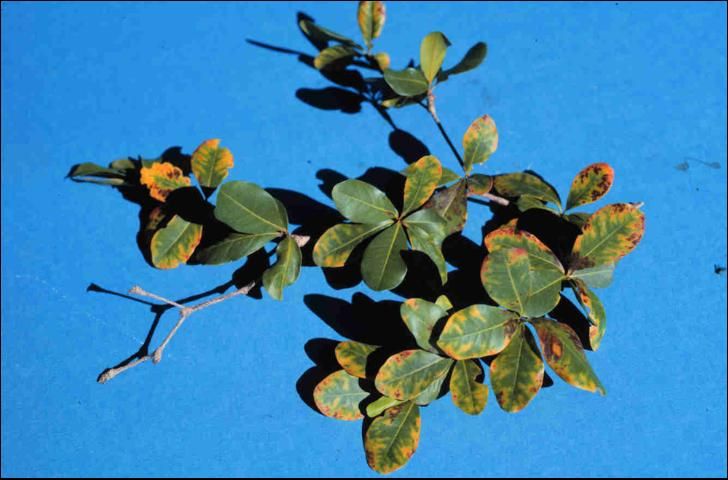


Magnesium (Mg)
Magnesium deficiency is probably the most common of all nutritional deficiencies on trees and shrubs throughout the state of Florida. Symptoms are most severe on the oldest leaves and appear as broad interveinal and/or marginal chlorosis, but not necrosis (Figures 9–12). Severely deficient plants will drop their lower leaves (Figure 13). Growth rate will be greatly reduced in such plants and a reduction in leaf size will also be observed.
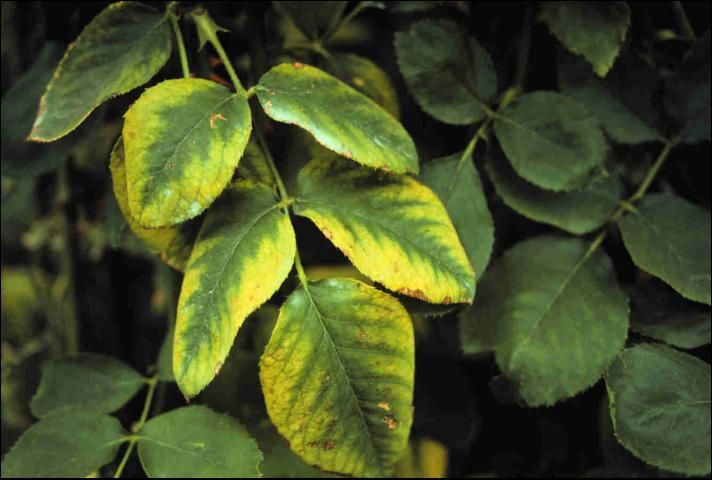
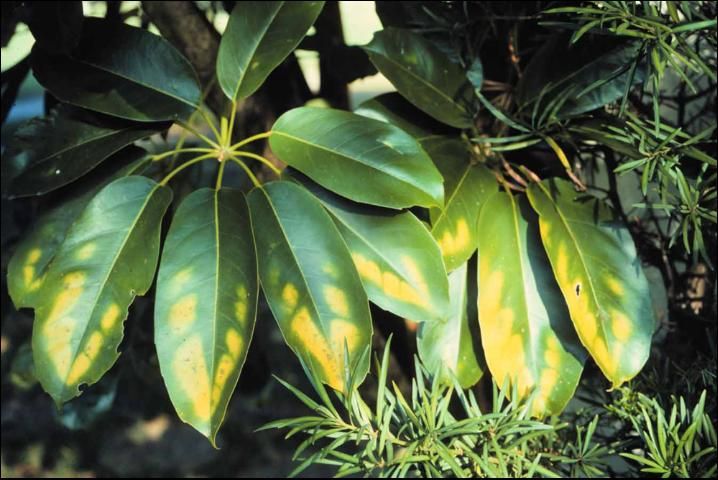
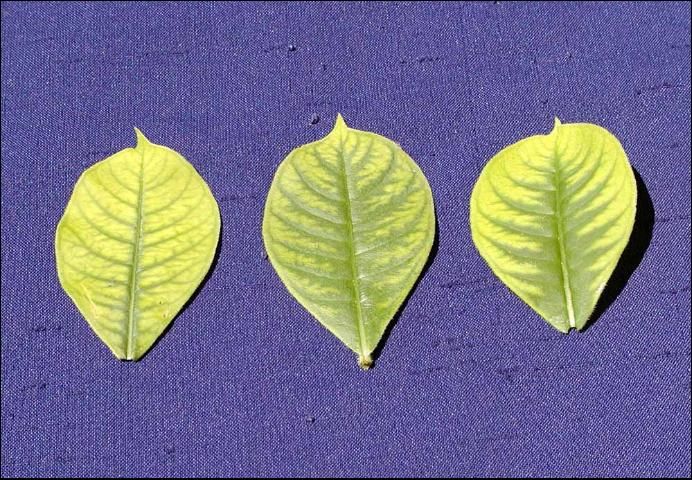

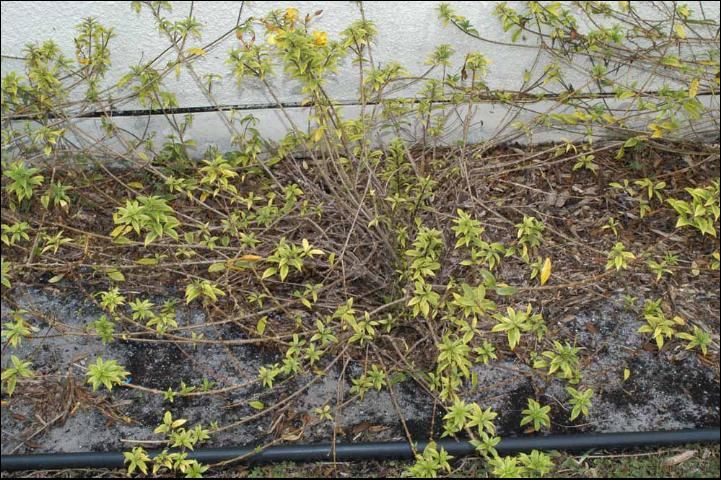
Iron (Fe)
Iron deficiency is common on trees and shrubs growing on alkaline or poorly drained soils. Plants with root problems caused by mechanical injury, root rot diseases, or nematodes may also exhibit Fe deficiency symptoms. Symptoms appear on newly emerging leaves as a sharply delimited interveinal chlorosis (Figure 14). In severe cases, new leaves may emerge reduced in size and nearly white in color, often with necrotic spotting (Figures 15–16).
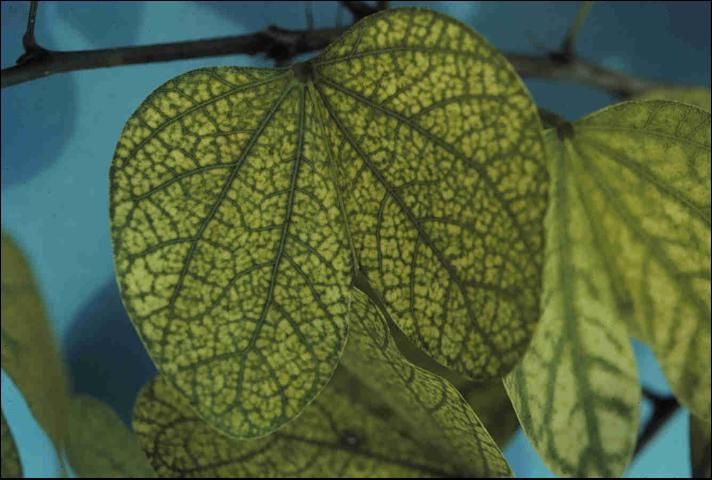


Manganese (Mn)
Manganese deficiency symptoms are occasionally observed on plants growing in alkaline or highly leached soils. Symptoms appear on newly expanding leaves and vary among species. For most species, Mn-deficient leaves exhibit a diffuse interveinal chlorosis with poorly defined green areas around the veins (Figure 17). Chlorotic, and often necrotic, spotting are common symptoms. As the deficiency progresses, new leaves become tiny, and tip die-back can occur (Figure 18). In some species such as Ficus microcarpa, new leaves emerge almost uniformly chlorotic with symptoms identical to those of Fe deficiency (Figure 19).
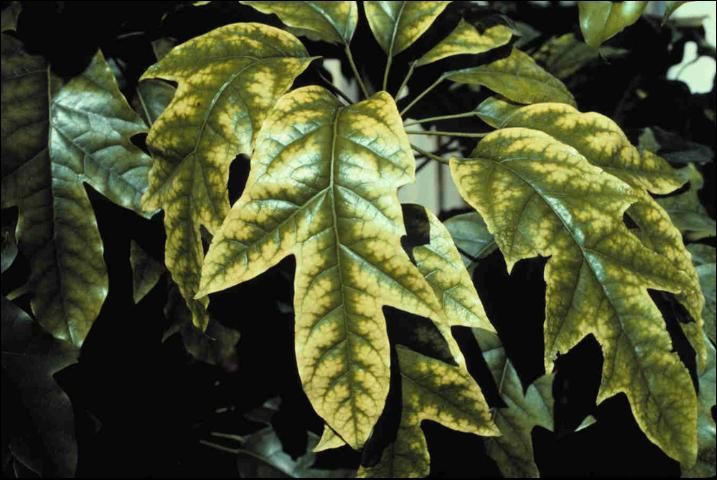
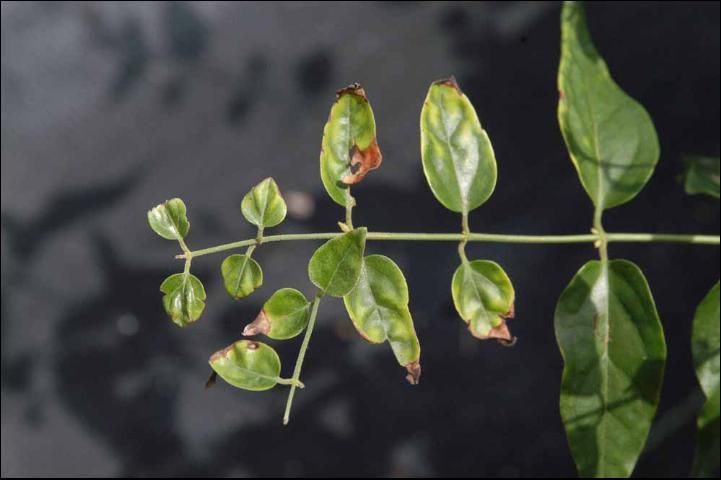
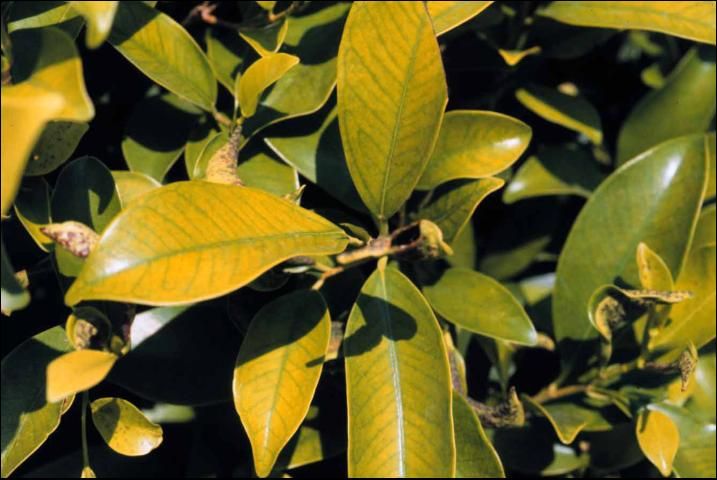
Boron (B)
Boron deficiency is rather rare in trees and shrubs but has been observed regularly in Chinese hibiscus (Hibiscus rosa-sinensis). Symptoms appear on the new growth as small, upwardly cupped or puckered, dark green, brittle leaves with short internodes (Figures 20 and 21). It may result in a rosette effect or even shoot die-back (Figure 22). Boron deficiency is caused by leaching on sandy soils, but by drying or high pH on other soil types.
